The Origin of New Species
Inspired by folk tales, mythical beasts, and Portuguese azulejos, an artist paints her own version of natural history.

Interview by Karolle Rabarison
The Morning News: Some anthropologists theorize that early images of hybrid creatures, such as in cave paintings and Assyrian reliefs, depict shamans interacting with or transforming into spirit animals. Historically, hybrids do often represent deities and other religious figures—the elephant-headed Ganesha in Hinduism, Christianity’s winged angel Gabriel, for instance. To what extent does your art incorporate religious messaging?
Rithika Merchant: “Origin of Species” was in part inspired by the Shamanic concept of the spirit/power animal. I focused on the emotional complexes and relationships between people and animals using universally recognizable motifs. However, my work has less to do with religion and more to do with folklore and indigenous culture. Continue reading ↓
All images used with permission, all rights reserved, copyright © the artist.
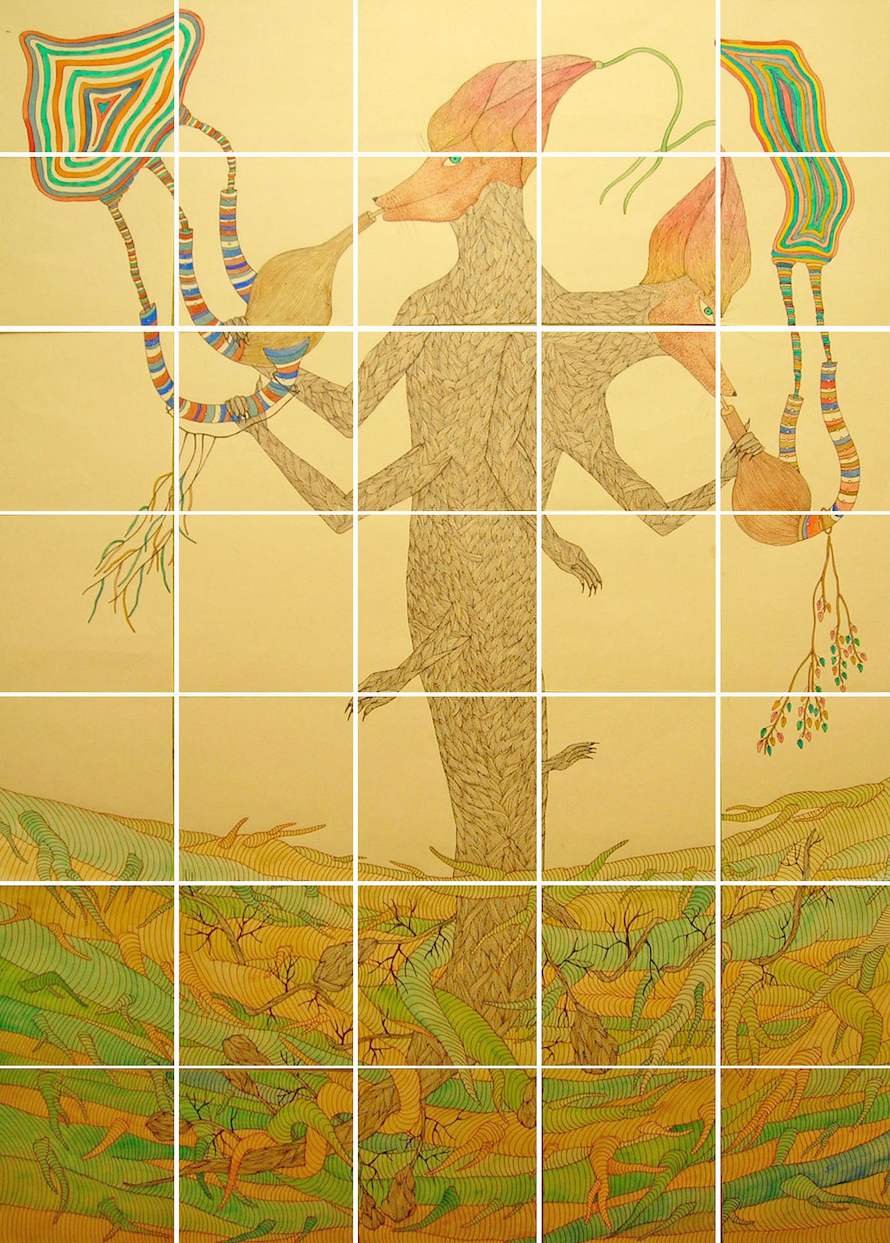
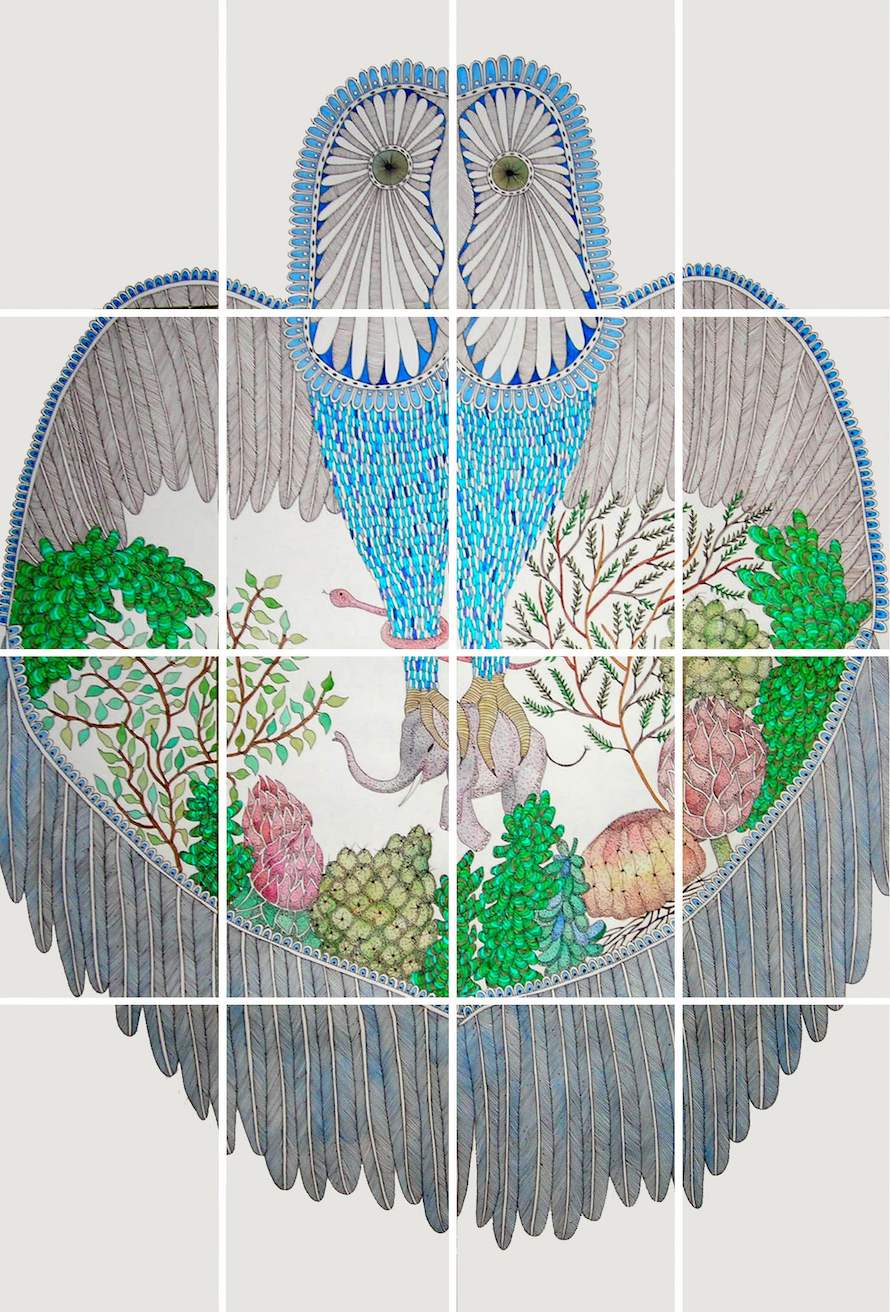
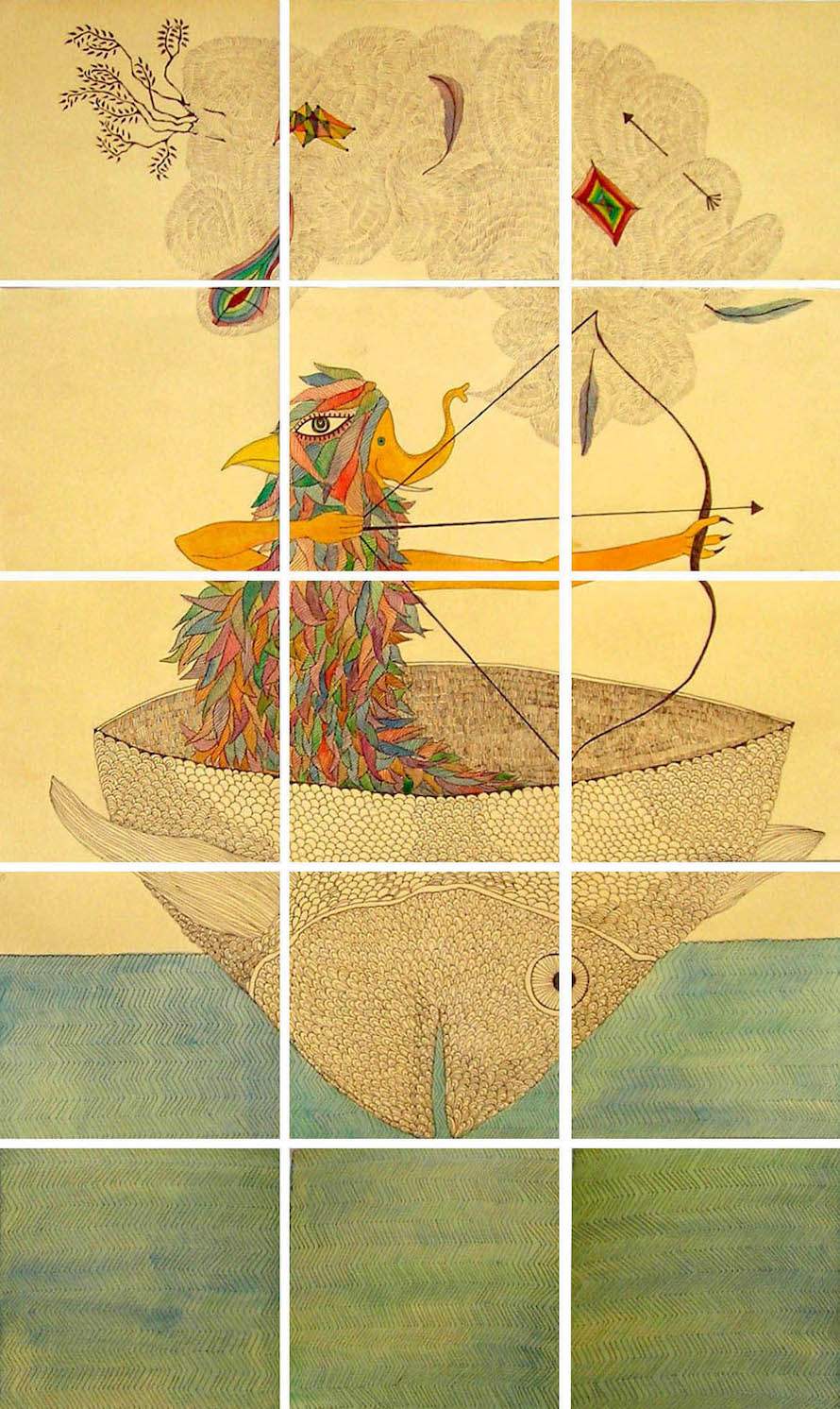
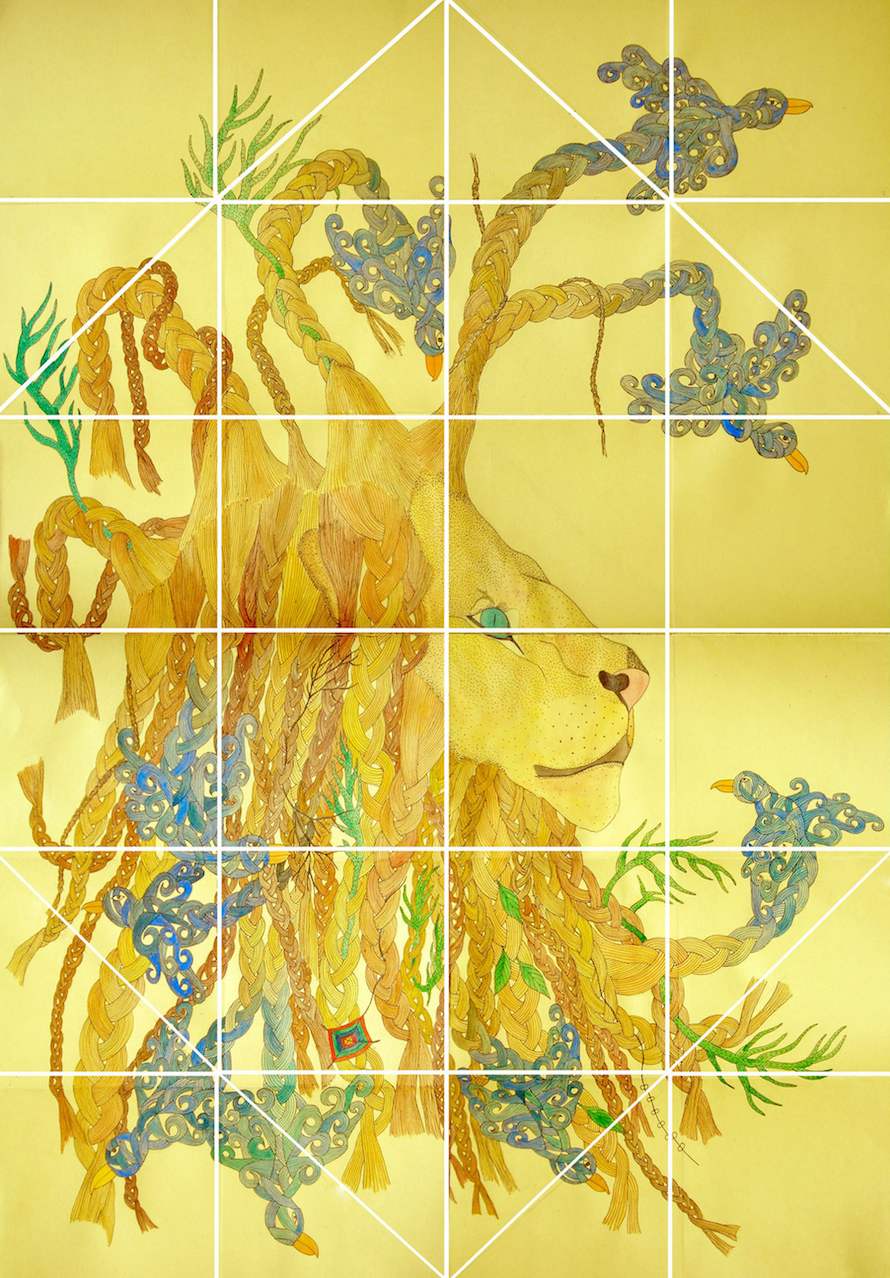
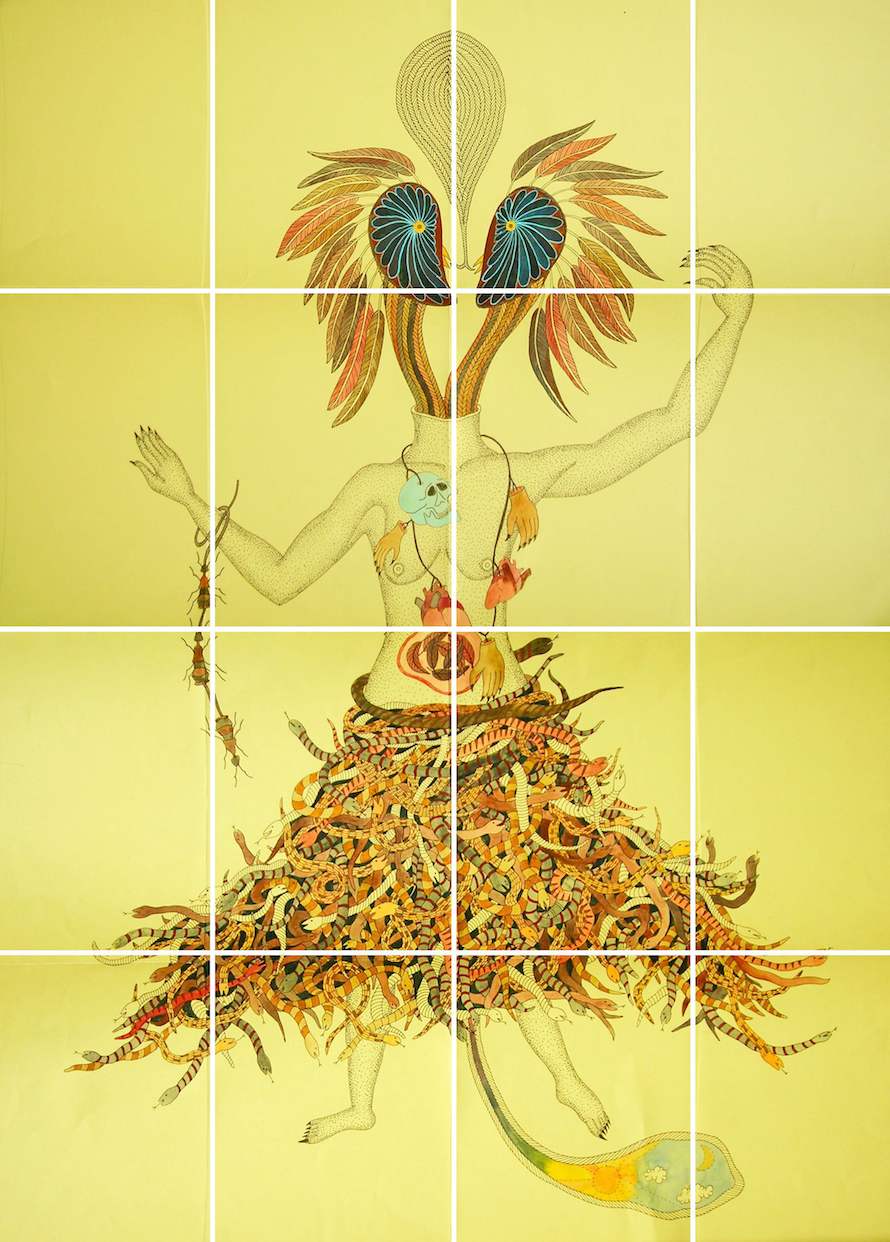
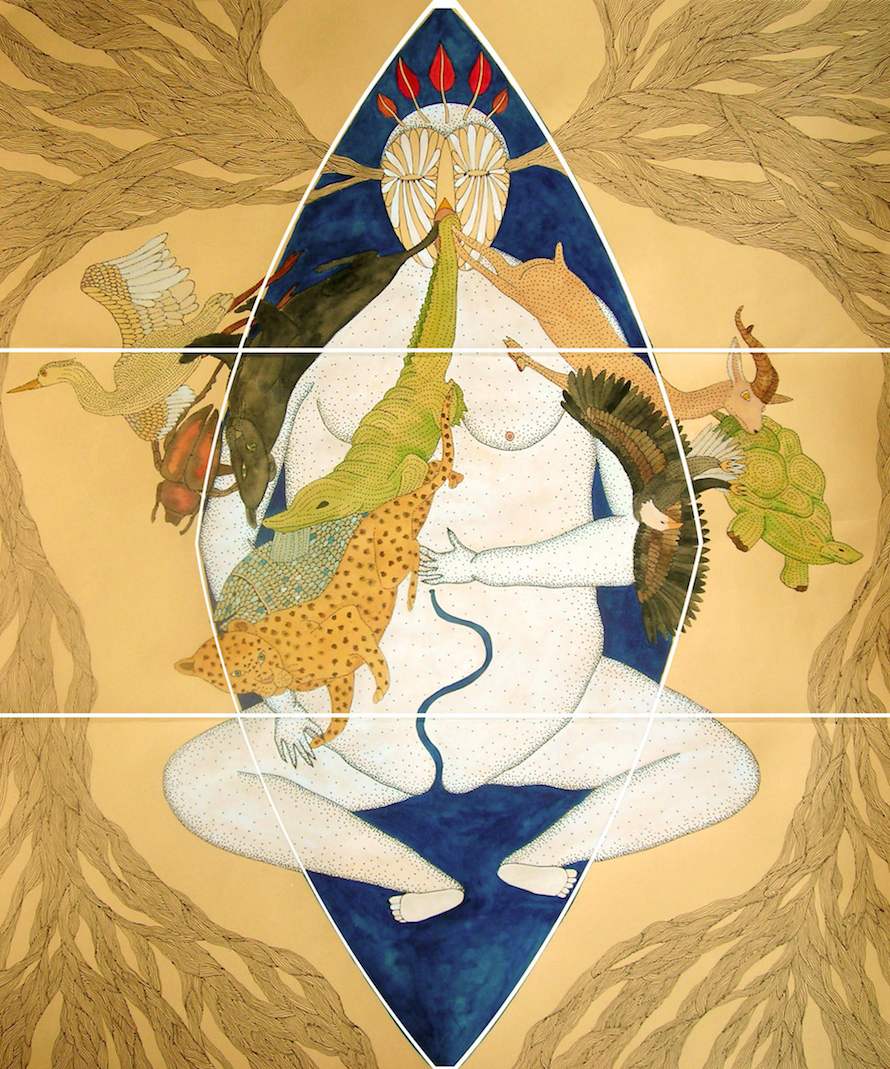

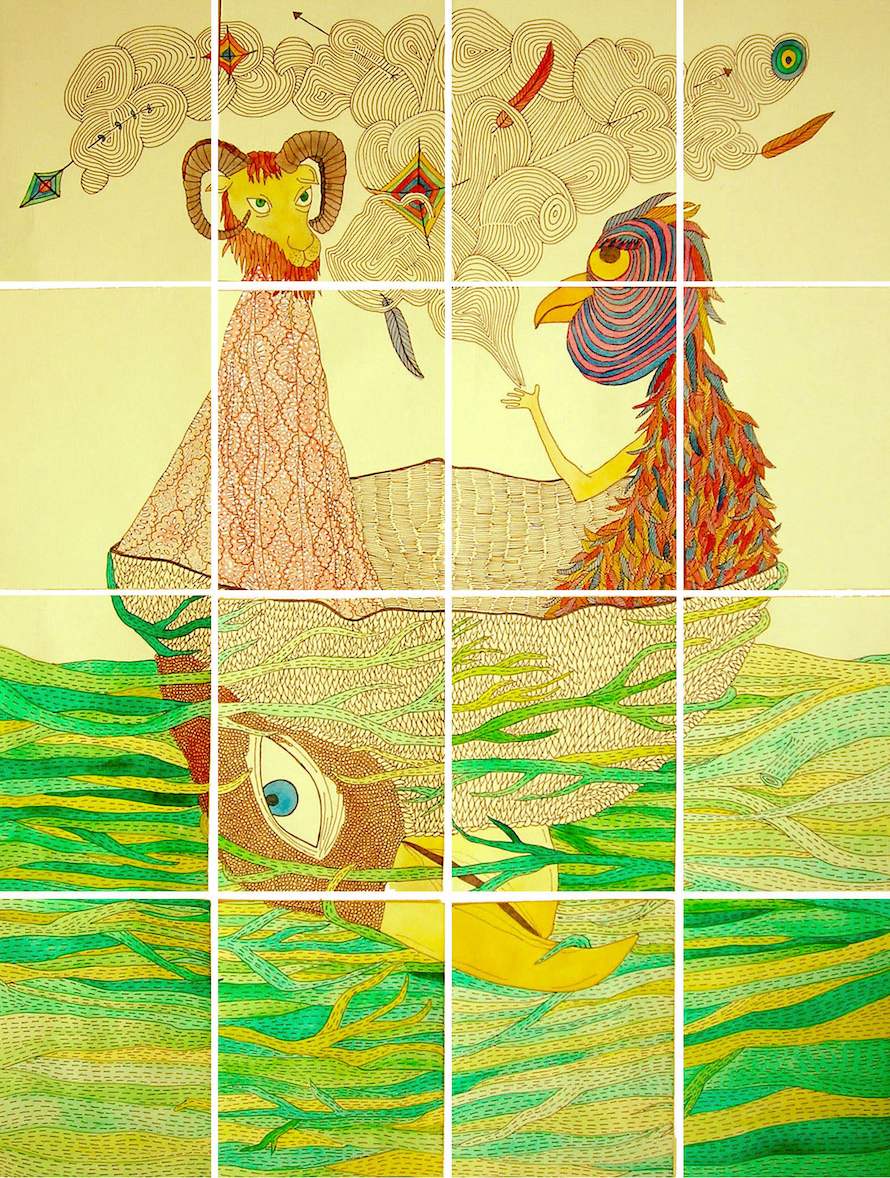
Interview continued
TMN: So what drew you to folklore?
RM: I first became interested in it after being introduced to Gond tribal art as a teenager. I was drawn to how each artist had their own signature decorative pattern that they used to fill their paintings. My interest in the visual representation of folklore began from looking at these drawings. Soon after that I began to seek out indigenous art and folktales from other cultures.
TMN: Your work largely draws inspiration from history. What is your attitude towards contemporary art such as video and web-based installations?
RM: Personally, it’s not a medium I am comfortable working in, just because it doesn’t lend itself to the way I express myself visually. I like the ability to summarize an idea with a still picture, leaving it observers to create a narrative in their own mind. I also like to work with tangible materials.
TMN: The paintings are also inspired by Portuguese azulejos. What brought you to Lisbon?
RM: Immediately after graduating from college, I did an artist residency in the Alentejo region of Portugal. I went to Lisbon for a weekend to see the city, fell in love with it instantly, and ended up moving there after my residency.
TMN: Is there a contemporary Portuguese artist working in this form whose work you find particularly striking?
RM: The murals by Eduardo Nery at the Campo Grande metro station in Lisbon are some of the most detailed, surreal, and gorgeous pieces of art I have seen.
TMN: Describe what you would be if you were a mythical hybrid.
RM: I’d be an Owlbex. I’d have the body and horns of an ibex and the face of an owl. The Owlbex is a benevolent sorceress who roams freely and can access many planes and worlds.
TMN: An exhibition of your new series “Mythography” recently closed in Mumbai. Where does that series sit in relation to your older work?
RM: “Origin of Species” combines characteristics of different animals and allows me to explore my personal and inherited folklore. “Mythography” is an exploration of myths and folklore across cultures and shared experiences. I also create a semi-autobiographical myth that discusses a woman as a Hero. Stylistically, I am still using hybrid creatures as characters in my narratives, but now there is more of the human form visible. The tiles have also evolved in shape.
TMN: What are you working on next?
RM: At the moment, nothing in particular. Working on “Mythography” completely consumed me. I am now taking a bit of time off to just read, think, and experiment with different materials. I have a few ideas brewing, but it’s too early to talk about them!
